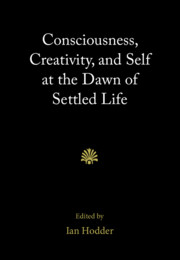Book contents
- Consciousness, Creativity, and Self at the Dawn of Settled Life
- Consciousness, Creativity, and Self at the Dawn of Settled Life
- Copyright page
- Contents
- Contributors
- Acknowledgments
- Part I Introduction to the Themes, Site, and Region
- Part II Higher Levels of Consciousness
- Part III Greater Innovation and Creativity
- Part IV Greater Awareness of an Integrated Personal Self
- 10 Personal Memory, the Scaffolded Mind, and Cognitive Change in the Neolithic
- 11 Adorning the Self
- 12 From Parts to a Whole? Exploring Changes in Funerary Practices at Çatalhöyük
- 13 New Bodies: From Houses to Humans at Çatalhöyük
- Notes
- Index
- References
10 - Personal Memory, the Scaffolded Mind, and Cognitive Change in the Neolithic
from Part IV - Greater Awareness of an Integrated Personal Self
Published online by Cambridge University Press: 22 February 2020
- Consciousness, Creativity, and Self at the Dawn of Settled Life
- Consciousness, Creativity, and Self at the Dawn of Settled Life
- Copyright page
- Contents
- Contributors
- Acknowledgments
- Part I Introduction to the Themes, Site, and Region
- Part II Higher Levels of Consciousness
- Part III Greater Innovation and Creativity
- Part IV Greater Awareness of an Integrated Personal Self
- 10 Personal Memory, the Scaffolded Mind, and Cognitive Change in the Neolithic
- 11 Adorning the Self
- 12 From Parts to a Whole? Exploring Changes in Funerary Practices at Çatalhöyük
- 13 New Bodies: From Houses to Humans at Çatalhöyük
- Notes
- Index
- References
Summary
‘The Çatalhöyük evidence as a whole’, write Hodder and Pels, ‘gives many indications that, indeed, people began to link themselves to specific pasts, by burying pots, tools, humans and hunting trophies in ways that indicate particular memories rather than a generic reference to a group’ (2010, 182). Hodder draws on his multidisciplinary team’s impressive studies of a wide range of artifacts and practices – household symbols, pit-digging, burial, figurines, tools, decoration, and more – to argue that forms of remembering emerged or consolidated at Çatalhöyük that were neither merely routinized and habitual, nor merely traditional and generic, and that took as their objects neither repeated activities nor widespread factual knowledge. Rather, the new forms of social memory being constructed at Çatalhöyük were ‘conscious, specific, and commemorative’, as household groups ‘began to make specific connections between the present and the past’ (Hodder & Cessford 2004, 35; Hodder 2006, 143).
- Type
- Chapter
- Information
- Consciousness, Creativity, and Self at the Dawn of Settled Life , pp. 209 - 229Publisher: Cambridge University PressPrint publication year: 2020
References
- 4
- Cited by



